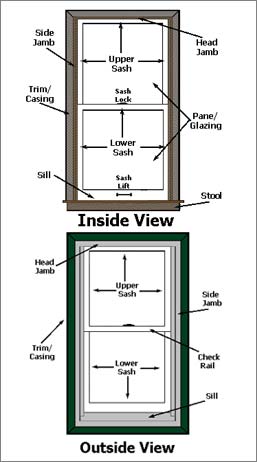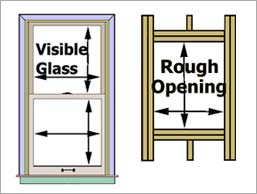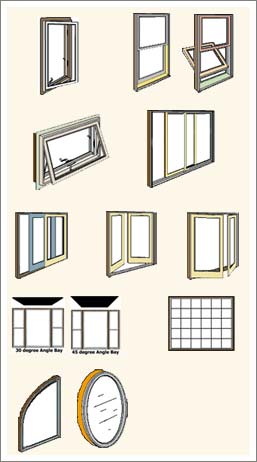Door and Window Types and Styles in East Brookfield, MA
Make the Right Choice for Custom Door Fitting Services
When you choose a door, you'll consider the look, material, purpose, and how the door will be installed to ensure you're on the right track. If that sounds like a lot, don't worry. It all helps narrow your choices to make the process more straightforward.A Touch of Elegance With Panel Doors
Panel doors feature a classic design with four or six raised or recessed panels. Six-panel doors are most common in the Northeast, lending your home a timeless, colonial look. These doors allow for aesthetic customization and can be used for both interior and exterior doorways.No Frills Flush Doors
Flush doors offer a minimalistic design with a flat, featureless surface. They're ideal for modern interiors or utility spaces because, depending on the level of durability and weight you desire, they can meet a variety of needs. Don't be turned away by the minimalist design; the right color can really make them pop.
Door Construction and Insulating Properties
Some interior doors are available with solid or hollow-core construction:
- Hollow-Core - As the name suggests, these doors have a little reinforcement in the center but are primarily hollow in the middle. Since they use less material, they're lightweight, cost-effective, and do a good job of soundproofing more modest spaces.
- Solid-Core - Choose solid doors for superior sturdiness, soundproofing, and a more substantial feel. They're also ideal for high-traffic areas.
Prehung and Slab Doors
- Slab Doors - These only include the door panel, not a frame, hinges, or hardware. They're perfect for replacing an old door while keeping the existing frame intact.
- Prehung Doors - Doors that come ready with a frame, hinges, and often pre-drilled holes for hardware are called prehung because they're already hung on a frame with hinges. These are ideal for entirely new installations or replacing old, damaged frames.
Materials to Match Your Needs
- Pine - Doors are available in various wood species, but pine is one of the most popular because it offers a natural, warm appearance and is a classic choice for interior or entry doors.
- Fiberglass - If you want the look of wood with better insulation capability, fiberglass is a durable and energy-efficient option for entry doors.
- Steel - Homeowners who prefer security choose steel doors for their sturdy, secure, and low-maintenance qualities. They also come with features like moisture-shed bottom rails and adjustable strike plates for added durability.
- Colonist - These are also known as Masonite doors. They're lightweight and budget-friendly, best suited for interior spaces where cost-effectiveness is key. You can choose smooth or woodgrain features to create the ideal aesthetic for your home.
Door Types for Every Area
Doors are manufactured with purpose in mind. Patio and fiberglass doors are some of our most popular ones, but hollow-core doors are constantly used in homes everywhere too. Ultimately, you'll want to consider what type of door it is when making your decision:- Entry Doors - Your front and back door entrances should be products designed for durability, security, and curb appeal. Options like fiberglass and steel work particularly well here.
- Interior Doors - Inside, the focus turns to style, lightweight functionality, and soundproofing, where panel, flush, and colonist designs lead the options.
- Patio Doors - Options include sliding, hinged, or out-swinging designs that bring natural light into your space while offering easy access to outdoor areas. No matter which option, patio doors aim to connect your home's interior with nature just outside.
Windows to Transform Your Space
Windows are vital for natural light, ventilation, and overall aesthetics. Understanding the different window types and where they work efficiently will help you choose the best look and function wisely. You'll find they come in various shapes, from classic rectangles to custom designs like ovals, arches, and trapezoids. Custom windows require a bit more lead time and investment, but deliver a unique touch to your home and can solve some space issues. If you don't have custom requirements, traditional shapes and sizes are excellent, cost-effective choices. Features like transoms, grilles, and textured glass can further enhance your window’s style and functionality.Double-Hung Windows
A timeless choice, double-hung windows have two sliding panes (sashes) that allow for versatile ventilation by opening from the top or the bottom. They're great for nearly any room and are easy to clean with tilt-in functionality.Gliding Windows
Gliding windows open horizontally, making them a practical choice for sunrooms and areas where a sleek, modern profile is desirable. Their unobstructed views are perfect for deck-facing walls or expansive outdoor scenery. They work similarly to sliding patio doors.Bay Windows
Bay windows project outward from the wall, typically including one large, fixed pane in the center with operable side windows. They work well for living rooms and breakfast nooks, adding depth, light, and style to your space.Casement Windows
These “crank out” windows swing outward with hinges on one side and have an interior screen to keep them functional and clean. Their unobstructed glass panes make them ideal for kitchens and other spaces with scenic outdoor views.Awning Windows
Awning windows open from the bottom with a horizontal hinge, preventing rain from entering while letting in airflow. They pair well with larger fixed windows or are commonly installed in narrower spaces like bathrooms and basements.Picture Windows
These non-operable windows are perfect for framing breathtaking views. Often combined with other types, such as casements or double-hung windows, they’re ideal for living spaces where natural light is a priority.
When in Doubt, Trust the Experts at Howe Lumber
Since 1965, Howe Lumber has been a trusted, family-owned business dedicated to helping homeowners make informed decisions. Our consultative approach ensures you’re only purchasing the materials you truly need, saving both time and money. Plus, with our full-service design and planning assistance, we’ll help you choose doors and windows that align beautifully with your home’s character and your personal style.
Come to Us With Your Window and Door Projects
Howe Lumber in East Brookfield, MA can assist with everything from door and window measurements to professional installation for years of enjoyment. Whether replacing one window or revamping your entire home, we offer the expertise, choices, and quality you
can count on. Visit us today and experience the difference a thoughtful consultation can make for your home renovation project.



